Durga Puja as Installation Art: Kaushik Sengupta
The art form popularly associated with Durga Puja is the making of pandals that are to be the guest house of Goddess Durga for the four days of her stay here. Since the days of the landed aristocracy, there used to be “sarvajanin puja” or community puja financed by the local committee. The mandaps were generally an extended hall of their residence.
But today puja pandals are seen in numbers at every street corner. These pandals are built according to well-set plans. Bamboo poles, planks of wood and meters of cloth are needed to construct such amazing mammoth structures. Skill and creative ideas are used to make the most exquisite and intricate designs. Built in an elaborate and grand manner, they often depict famous architectural splendours. These pandals are later decorated with galaxies of twinkling lights. The lighting work, which depicts stories and legends of Durga Puja, attracts huge crowds.
I don’t treat Durga Puja as purely a religious festival. It has its base in the Hindu pantheon, but this worship normally does not take place in temples or formal places of worship. Multi-coloured shamianas come up in public parks and the designs are a feast for the eyes. Each “para” or locality tries to compete with others to make an impact, and there are many prizes for the most artistic of decorations, or the most well-managed pujas. Coloured lights are put up in all the parks and streets and these too rise to great artistic heights. Dynamic light effects could depict stories of battles, of animals walking and running, games being played, or even rockets taking off.
With the entry of “designers” into the Pujas, previously the domain of “artisans” — idol-makers, pandal-builders and decorators — the festival has become a public art event instead of just a spectacle or a gimmick or even pure kitsch. So feels Tapati Guha-Thakurta, a professor of History at the Centre for Studies in Social Sciences, Calcutta. She is a researcher of the art and cultural history of modern India — and a hardened Puja enthusiast.
Art Puja is not new in Calcutta. Since 1975, Bakulbagan in Bhowanipore has commissioned artists, from Nirad Majumdar to Suvaprasanna, to design their idols. But from the late 1990s, there has been a real boom, from about the time “theme” pujas started. Now there are six to seven prime design people, who see themselves as artists, such as Bhabatosh Sutar, Sanatan Dinda and Amar Sarkar. These idols are not immersed – they are symbolic – while a small idol, which is also worshipped at the Puja, is sent for “bisarjan”. Some parts of “designer” pandals are also sold later, for wedding decorations perhaps. The sobriquet is also appropriate, given the preponderance of rustic “themes” — terracotta tiles, bamboo, jute work, pottery, and a tendency to revive “dying” folk arts. It also reflects on the larger visual culture of the city. This is a wonderful form of art and part of a deep rooted culture.
But Durga puja is ultimately Matri puja (the worship of the Mother Goddess) – which results in a tension between the artwork and the religious icon.

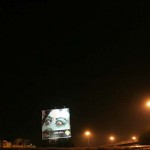
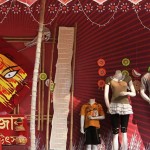



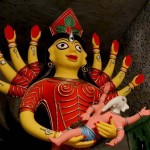




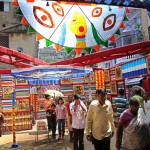
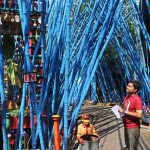
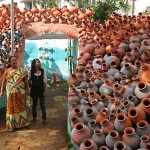
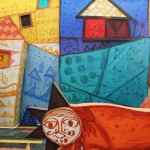

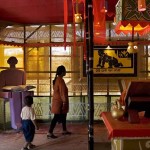
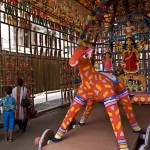
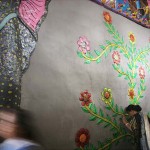
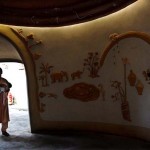
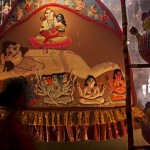
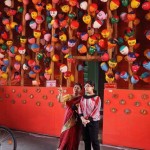
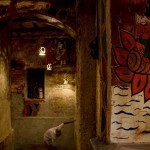
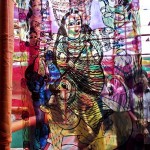
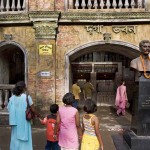
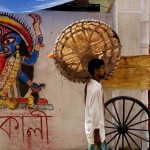
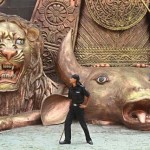
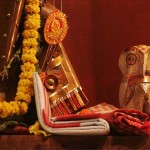
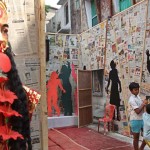
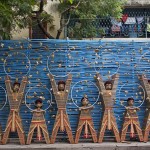
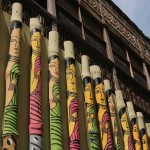
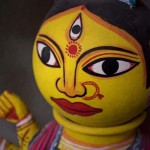
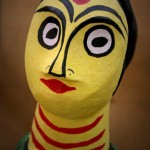
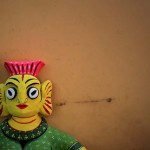
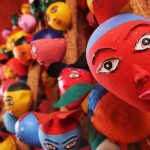
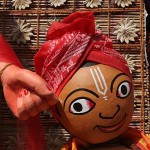
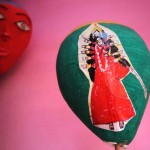
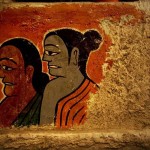
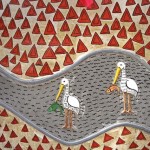
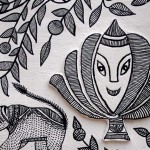
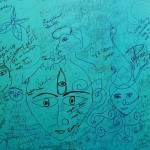
MA DURGA ABARO ROOP NILEN CHIRONJIB OSTITME.
EBAR TOMAR PIXEL-BONDONAY KAUSHIK …
ONONTER PANE …
just exxxxxxxxxxxxxxxxxelent……………….